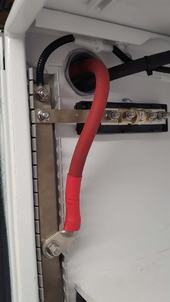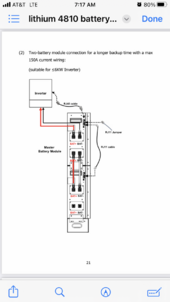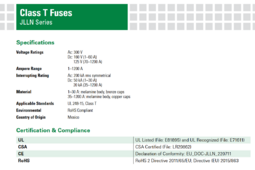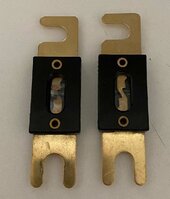priorityelec
New Member
- Joined
- Sep 11, 2020
- Messages
- 37
I have a few EG4 batteries and an LV6548 all in one. The batteries come with a built in circuit breaker/fuse and I'm pretty sure I read the LV6548 has built in fuses. They all connect to the same bus bars. Do i need a T Class fuse for each battery too? Do I not need any more fuses? Am I safe or what am I missing?






